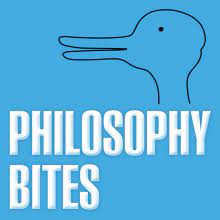
In this episode of “Stuff You Should Know” podcast, the hosts dive into the fascinating world of music sampling. They explore the controversies, legal battles, and creative possibilities that arise when artists use snippets of existing songs to create something new. From the origins of sampling to landmark court cases, this episode provides a comprehensive look at the history and impact of music sampling.
Bridgeport, a music catalog company, gained notoriety for aggressively suing artists who sampled their music without permission. Their lawsuits, which earned them the nickname “sample trolls,” targeted both well-known artists like Jay-Z and lesser-known artists who sampled George Clinton’s work. However, these lawsuits have sparked debates about the stifling of creativity and the role of corporations in owning music. Some argue that even when the sampled work is unrecognizable, lawsuits like Bridgeport’s can hinder artistic expression.
Sampling has a rich history, with famous samples like James Brown’s Funky Drummer and The Winston’s A-men break being used extensively across different genres of music. The drum loop played by Gregory Sylvester Coleman, the drummer behind the famous drum lick, has become one of the most important six-second loops in music history. Sampling allows artists to incorporate elements from various sources, including songs, TV shows, movies, and speeches, resulting in unique and diverse musical creations.
The Mellotron, the first sampler, revolutionized music production by enabling users to sample and loop pre-recorded notes. Avant-garde artists Pierre Schaeffer and Pierre Henry’s music concrete laid the foundation for electronic music and sampling techniques. DJs Cool Herc and Grandmaster Flash were pioneers in turntable sampling, inspired by a BBC documentary on music concrete. While early hip-hop groups like De La Soul, Public Enemy, and the Beastie Boys embraced creative sampling, some modern artists rely on repetitive loops rather than pushing the boundaries of sampling.
The legal landscape of sampling changed in the 1980s with copyright law amendments. Artists were required to obtain permission and pay royalties for samples, leading to increased costs as sales grew. Famous cases like Vanilla Ice’s failure to credit Queen for sampling their baseline and the Beastie Boys’ unauthorized use of a Funkadelic sample highlight the legal complexities surrounding sampling. Fair use provides some leeway for limited sampling without permission, but its application may vary in different countries.
Music sampling is a controversial and complex topic that raises questions about creativity, ownership, and the legal landscape. While some argue that sampling stifles creativity and leads to legal battles, others see it as a powerful tool for creating innovative and diverse music. The history and impact of sampling demonstrate its significance in shaping various genres and pushing the boundaries of musical expression. As technology and legal frameworks continue to evolve, the future of music sampling remains an intriguing and ever-changing landscape.